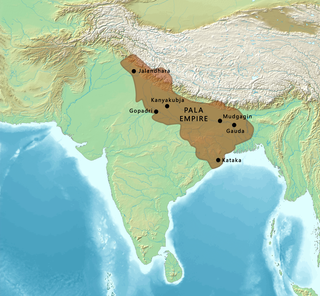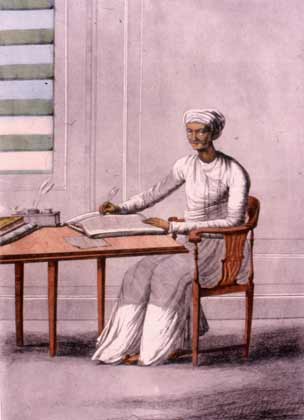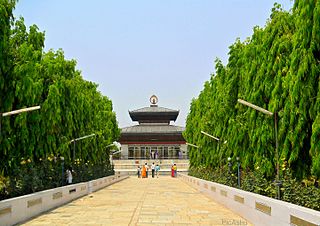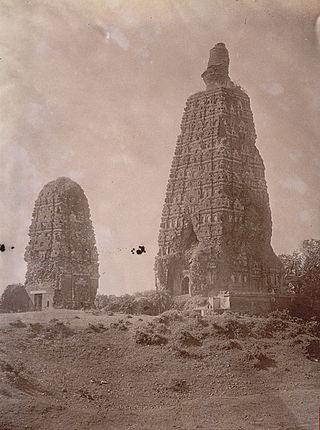Karuneegar of TamilNadu

Karuneegar is a caste of scribes of TamilNadu. Sircar mentions that they give great importance to mathematics so much so that one of the subcaste is named Kanakkar which literally stands for Mathematics in Tamil. [14]
Karan Kayastha is a community of Kayasthas that inhabit Orissa and the Mithila region, a region now divided between India and Nepal. [1]
According to Manu , a Hindu scripture, the Karans are regarded as bratya (degraded) Kshatriyas. [2] Other scriptural law books, such as Yajnavalkya Smrti and Amarakosha, describe them as born of a male Vaishya and female Shudra. [3] [ page needed ]
The archeologist B. P. Sinha says that the duty of Karanas was rajaseva and durgantapuraraksha. [3] [ page needed ][ clarification needed ]
Epigraphist Dineshchandra Sircar mentions that several historial edicts and inscriptions have been found in the relevant geographic locations that show that the terms Karana, Karanin, Karaneeka, Karanakas and Karaneegars are used to represent a bureaucratic range from clerks to ministers. Significant among these are Minor Rock Edict No. II, the Kanas plates of Lokavigraha, the Ghugrahati copperplate of Samacharadeva and the Tipper copperplate of Lokanath etc. [4] [ page needed ]
The Karna of Mithila are called Maithil Karna Kayastha, and are mainly distributed in the Darbhanga and Madhubani districts. The community has two subgroups, namely Bhalemanush and Grihastha. [5] The Karna Kayasthas are viewed as the most pure and ancient embodiment of Mithila culture along with Maithil Brahmins. They do not fit in four varna system but still became a dominant caste of this region. [6]
The Karan caste group can also be found in Bengal region from the mediaeval era. The Brihad-dharma and Brahma-vaivarta Puranas mentioned a caste group called Karana of mixed descent born from Vaishya father and Shudra mother, classified under the Sat-Shudra/ Uttam-Sankar-Sudra category. [7] Vaijayanti (11th century A.D.), a lexicographer, appears to consider Kayastha and Karana to be synonymous and depicts them as scribes. According to Historian Ramesh Chandra Mazumdar the Karana merged themselves into the Kayastha caste who performed the same profession like them. [8]
The Karans held high position in Oriya society as being mentioned highly in early scriptures. They adopted the profession of writing and were merged in the Kayastha community. Sinha also mentions that the word Kayastha and Karana are often used synonymously in the scriptures of Orissa. [9] Sircar suggests that as shown in the Bhajas inscription, a list of individuals involved in land records contains a phrase 'Brahmana-Karana-Puroga-Nivasi' which may be good indication of their social status then. [4] Historian RS Sharma also mention that Loknatha, a Karana, was also referred to as a Brahmin in inscriptions, but they were ranked lower in most literature. [10] Even in the current scenario they hold good political power in Odisha including several Chief Ministers in recent years. [11]
Karanam (Telugu: కరణం) or Karnam was an office and title native to the Indian states of Andhra Pradesh and Telangana. Traditionally, Karanam was an official who maintained the accounts and records of the villages and collected the taxes. [12] [13] Sircar mentions that they mostly dealt with accounting, bureaucracy, teaching etc. [4]

Karuneegar is a caste of scribes of TamilNadu. Sircar mentions that they give great importance to mathematics so much so that one of the subcaste is named Kanakkar which literally stands for Mathematics in Tamil. [14]

The Pāla Empire was an imperial power during the post-classical period in the Indian subcontinent, which originated in the region of Bengal. It is named after its ruling dynasty, whose rulers bore names ending with the suffix Pāla. The empire was founded with the election of Gopāla as the emperor of Gauda in late eighth century CE. The Pala stronghold was located in Bengal and eastern Bihar, which included the major cities of Gauḍa, Vikramapura, Pāṭaliputra, Monghyr, Somapura, Ramavati (Varendra), Tāmralipta and Jaggadala.

Kayastha or Kayasth denotes a cluster of disparate Indian communities broadly categorised by the regions of the Indian subcontinent in which they were traditionally located—the Chitraguptavanshi Kayasthas of North India, the Chandraseniya Kayastha Prabhus of Maharashtra, the Bengali Kayasthas of Bengal and Karanas of Odisha. All of them were traditionally considered "writing castes", who had historically served the ruling powers as administrators, ministers and record-keepers.

Shashanka was the first independent king of a unified polity in the Bengal region, called the Gauda Kingdom and is a major figure in Bengali history. He reigned in the 7th century, some historians place his rule between circa 600 CE and 636/7 CE, whereas other sources place his reign between 590 and 625 CE.

The history of Bihar is one of the most varied in India.Chirand, on the northern bank of the Ganga River, in Saran district, has an archaeological record dating from the Neolithic age. Regions of Bihar—such as Magadha, Mithila and Anga—are mentioned in religious texts and epics of ancient India. Mithila is believed to be the centre of Indian power in the Later Vedic period. Mithila first gained prominence after the establishment of the ancient Videha Kingdom. The kings of the Videha were called Janakas. A daughter of one of the Janaks of Mithila, Sita, is mentioned as consort of Lord Rama in the Hindu epic Ramayana. The kingdom later became incorporated into the Vajjika League which had its capital in the city of Vaishali, which is also in Mithila.
Srivastava, also spelled variously as Shrivastava, Shrivastav or Srivastav, is a common surname found amongst the Chitraguptavanshi Kayastha community of upper caste Hindus particularly in the Hindi-speaking regions of India.
The Karan or Karana is a community of scribes found in the state of Odisha in India. The post of Karana used to be a professional designation that was occupied by literate members of the lower as well as the higher castes. They also held Karanam post in some parts of Andhra Pradesh, where they speak Odia and played the similar role in Odisha as that of the Kayasthas of West Bengal and Bihar. Traditionally they were the official record-keepers in the royal courts of the Odia princely states historically. Today they are a politically dominant community and have reigned over the politics of Odisha for 40 years.

Maithil Karna Kayasthak Panjik Sarvekshan is a book written by Binod Bihari Verma in Maithili. It is a research study on the available ancient manuscripts in the Mithila region, called as Panjis, which are genealogical charts of Maithil Brahmin and Kayasthas castes. This study deals with the manuscripts available in respect of Karna Kayasthas.
Panjis or Panji Prabandh are extensive genealogical records maintained among the Maithil Kayasthas and Maithil Brahmins of the Mithila region similar to the Hindu genealogy registers at Haridwar.

Mithila, also known as Tirhut, Tirabhukti and Mithilanchal is a geographical and cultural region of the Indian subcontinent bounded by the Mahananda River in the east, the Ganges in the south, the Gandaki River in the west and by the foothills of the Himalayas in the north. It comprises certain parts of Bihar and Jharkhand of India and adjoining districts of the Koshi Province, Bagmati Pradesh and Madhesh Province of Nepal. The native language in Mithila is Maithili, and its speakers are referred to as Maithils.
Ambashtha or Ambastha is a caste or sub-caste or a community of Hindus in India. According to Hindu scriptures, the term Ambastha refers to the offspring of a Brahmin father and a Vaishya mother, whose traditional occupation was the practice of medicine.
Bhumihar, also locally called Bhuinhar and Babhan, is a Hindu caste mainly found in Bihar, the Purvanchal region of Uttar Pradesh, Jharkhand, the Bundelkhand region of Madhya Pradesh, and Nepal.

Maithil Brahmins are the Hindu Brahmin community originating from the Mithila region of the Indian subcontinent that comprises Tirhut, Darbhanga, Kosi, Purnia, Munger, Bhagalpur and Santhal Pargana divisions of India and some adjoining districts of Nepal. They are one of the five Pancha-Gauda Brahmin communities. Apart from the Mithila region, they also inhabit various other places in India, including Agra, Aligarh, Hathras And Mathura of Western Uttar Pradesh The main language spoken by Maithil Brahmins is Maithili.
Baidya or Vaidya is a Hindu community located in Bengal. A caste (jāti) of Ayurvedic physicians, the Baidyas have long had pre-eminence in society alongside Brahmins and Kayasthas. In the colonial era, the Bhadraloks were drawn primarily, but not exclusively, from these three upper castes, who continue to maintain a collective hegemony in West Bengal.

Angika is an Eastern Indo-Aryan language spoken in some parts of the Indian states of Bihar and Jharkhand, as well as in parts of Nepal.

Bengali Kayastha, is a Bengali Hindu caste originated from the Bengal region of Indian subcontinent, and is one of the main subgroups of the Kayastha community. The historical caste occupation of Kayasthas throughout India has been that of scribes, administrators, ministers and record-keepers; the Kayasthas in Bengal, along with Brahmins and Baidyas, are regarded among the three traditional higher castes that comprise the "upper layer of Hindu society." During the British Raj, the Bhadraloks of Bengal were drawn primarily, but not exclusively, from these three castes, who continue to maintain a collective hegemony in West Bengal.
Karan may refer to:
Baishya Saha or Saha, though not considered Vaishya in the caste structure of Bengal, is a Bengali Hindu trading caste traditionally known to have the occupation of grocers, shopkeepers, dealers moneylenders, and farming.
Ambattar is a Tamil caste found in the Indian state of Tamil Nadu and northeastern part of Sri Lanka. Their traditional occupations are physicians, midwives and barbers. Leslie in his comparative study of Asian medical systems explains that Vaidya title is adopted by members of Ambathans in Tamil Nadu, only some of them practice medicines and are more highly esteemed than the others who are barbers.
Nanyadeva was the founder of the Karnata dynasty of Mithila. He was the ancestor of Harisimhadeva and descendant of Suheldev. He established his capital in Simraungadh and ruled the greater Mithila region for 50 years. He is known for his generosity, courage, and patronage of scholars. He was from Karnat Kshatriya Kula and began to rule Mithila from Simraungadh in 1097 CE. The stone inscription found at Simraongarh and Nepālavaṃśāvalī clearly states that he made an erection in a Singha Lagna of a Saturday in a Sravana, the tithi being Sukla seven and the Naksatara Svati in the year 1019 Shaka.

The Pīṭhīpatis of Bodh Gaya were the rulers of the area around Bodh Gaya from roughly the 11th to 13th centuries in the Magadha region of what is now Bihar in India. Pithi refers to the diamond throne where the Buddha was said to have gained enlightenment.
Patwari / Karanam shall be the additional secretary to the gram panchayat for keeping the record concerning lands